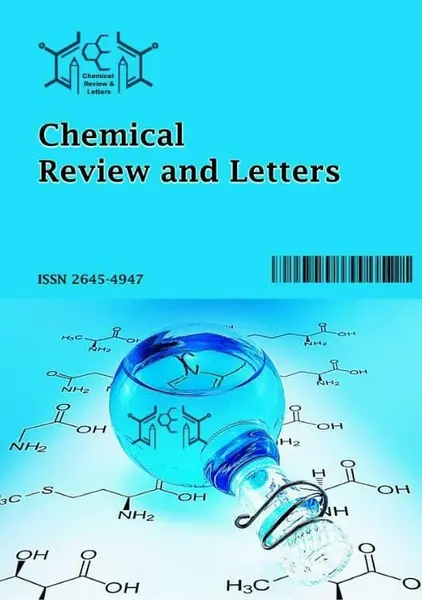-
removal of black remazol in aqueous solution with activated carbons from corncobs based on the design of experiments methodology
جزئیات بیشتر مقاله- تاریخ ارائه: 1401/11/13
- تاریخ انتشار در تی پی بین: 1401/11/13
- تعداد بازدید: 188
- تعداد پرسش و پاسخ ها: 0
- شماره تماس ژورنال: 989360221112
removal of black remazol in aqueous solution with activated carbons from corncobs based on the design of experiments methodology
this study falls not only into the theme of water depollution but also and above all into the recovery of waste (logic of the 3 r: reduce, reuse and recycle). there was talk of recovering corncobs, which are considered as “agricultural waste” in developing countries such as côte d’ivoire. they were used as activated carbon to adsorb black remazol in a synthetic aqueous solution.
this activated carbon obtained has a specific surface of 673.33 m²/g, a mass loss of 61.44 %, an iodine value of 168.31 mg.g-1 and a zero charge potential of 2.05. the design of experiments methodology was used on the one hand to detect the influential factors and on the other hand to optimize the elimination of this dye. thus, in a first approach six factors (ph of the solution, mass of activated carbon, temperature, and concentration of the solution, stirring time and stirring speed) were used when using the hadamard matrix.
this showed that only three parameters, the mass of adsorbent, the concentration of the solution and the stirring time actually have an influence on the response. the results of the full two-level factorial design showed that the maximum removal rate of black remazol is 96.67 % under the conditions of stirring a solution with a concentration of 10 mg/l of this dye with a mass of adsorbent of 0.3 g for 20 minutes.
حوزه های تحت پوشش ژورنال
مقالات جدیدترین رویدادها
-
استفاده از تحلیل اهمیت-عملکرد در ارائه الگوی مدیریت خلاقیت سازمانی و ارائه راهکار جهت بهبود
-
بررسی تاثیر ارزش وجوه نقد مازاد بر ساختار سرمایه شرکت های پذیرفته شده در بورس اوراق بهادار تهران
-
بررسی تأثیر سطح افشای ریسک بر قرارداد بدهی شرکت های پذیرفته شده در بورس اوراق بهادار تهران
-
بررسی تأثیر رتبه بندی اعتباری مبتنی بر مدل امتیاز بازار نوظهور بر نقد شوندگی سهام با تأکید بر خصوصی سازی شرکت ها
-
تأثیر آمیخته بازاریابی پوشاک ایرانی بر تصویر ذهنی مشتری پوشاک ایرانی (هاکوپیان)
-
توزیع محورهای جنبشی شمال شرق فریمان با استفاده از شکستگی های موجود در منطقه
-
روشی ساده جهت محاسبه تاثیر اشباع خاک بر روی ظرفیت باربری پی های سطحی در حالت لرزه ای
-
biphasic recognition chiral extraction — novel way of separating pantoprazole enantiomers
-
dynamic crude oil fouling prediction in industrial preheaters using optimized ann based moving window technique
-
approximation and numerical realization of 3d quasistatic contact problems with coulomb friction
مقالات جدیدترین ژورنال ها
-
مدیریت و بررسی افسردگی دانش آموزان دختر مقطع متوسطه دوم در دروان کرونا در شهرستان دزفول
-
مدیریت و بررسی خرد سیاسی در اندیشه ی فردوسی در ادب ایران
-
واکاوی و مدیریت توصیفی قلمدان(جاکلیدی)ضریح در موزه آستان قدس رضوی
-
بررسی تاثیر خلاقیت، دانش و انگیزه کارکنان بر پیشنهادات نوآورانه کارکنان ( مورد مطالعه: هتل های 3 و 4 ستاره استان کرمان)
-
بررسی تاثیر کیفیت سیستم های اطلاعاتی بر تصمیم گیری موفق در شرکتهای تولیدی استان اصفهان (مورد مطالعه: مدیران شرکتهای تولیدی استان اصفهان)
-
توسعه روش ترکیبی موجک-شبکه عصبی مصنوعی و ماشین بردار پشتیبان برای مدلسازی چند ایستگاهه بارش-رواناب با استفاده از ابزارهای خوشه بندی و اطلاعات مشترک
-
بررسی رابطه رهبری تحول گرا و فرآیند توسعه محصول جدید با توجه به نقش میانجی یادگیری سازمانی و فرهنگ نوآوری
-
ارائه یک روش مبتنی بر داده کاوی برای کاهش اثرات تخریب کلیه در بیماران دیالیزی
-
بررسی درک مصرف کننده از فعالیت های بازاریابی رسانه های اجتماعی بر ارزش گذاری برند، پاسخ مشتری و قصد خرید
-
بررسی مدل تطبیقی سبک مدیریت تحول خواه در اثربخشی سازمان های دولتی (مطالعه موردی: بهزیستی شهرستان ایرانشهر)


سوال خود را در مورد این مقاله مطرح نمایید :